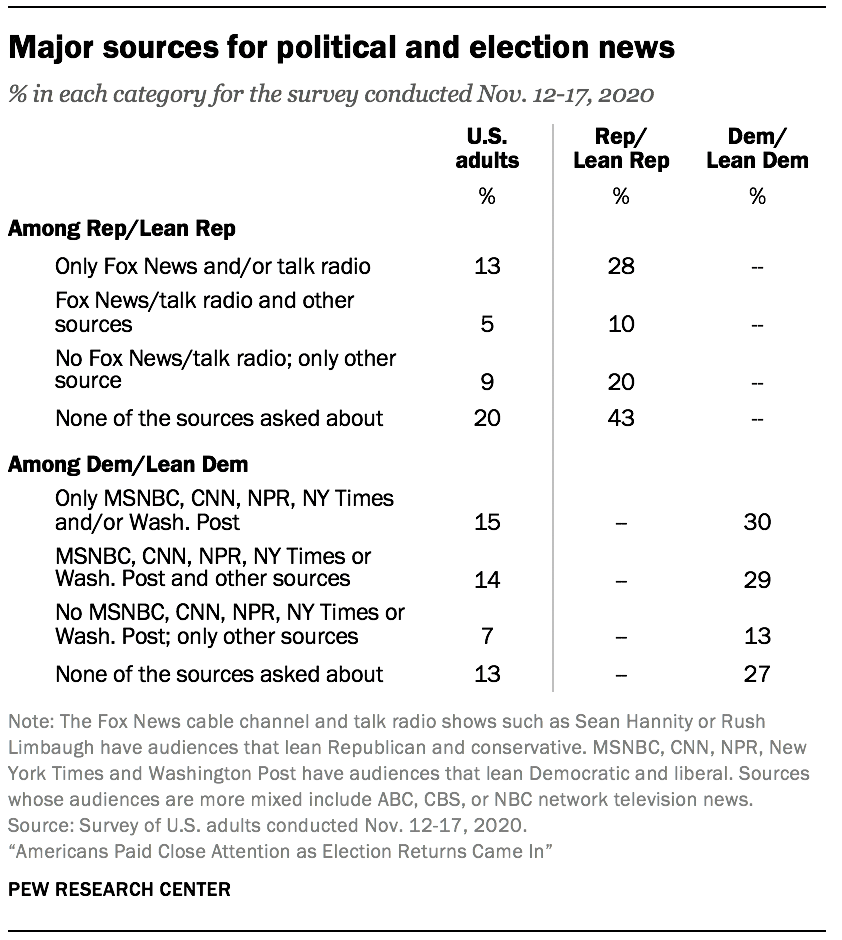 A survey conducted Aug. 31-Sept. 7, 2020, asked whether respondents use any of eight news sources as a major source, minor source or not a source for political and election news. (Responses for all eight sources are available here.) The sources identified as major sources were combined with the respondents’ partisanship to identify those who get news from only sources with audiences that lean toward their party (i.e., Republicans who get news only from sources with right-leaning audiences and Democrats who only get news from sources with left-leaning audiences) or another mix of sources. Those who do not use any of the eight sources asked about as a major source for political and election news are in a separate category. Researchers merged the responses to these questions from late August and early September to the survey data collected Nov. 12-17, 2020.
A survey conducted Aug. 31-Sept. 7, 2020, asked whether respondents use any of eight news sources as a major source, minor source or not a source for political and election news. (Responses for all eight sources are available here.) The sources identified as major sources were combined with the respondents’ partisanship to identify those who get news from only sources with audiences that lean toward their party (i.e., Republicans who get news only from sources with right-leaning audiences and Democrats who only get news from sources with left-leaning audiences) or another mix of sources. Those who do not use any of the eight sources asked about as a major source for political and election news are in a separate category. Researchers merged the responses to these questions from late August and early September to the survey data collected Nov. 12-17, 2020.
The eight sources asked about are:
- Fox News cable channel
- CNN
- MSNBC
- ABC, CBS or NBC national network TV
- NPR
- The New York Times
- The Washington Post
- Talk radio, such as Sean Hannity or Rush Limbaugh
Sources were selected from among the top responses (used by about 10% or more of U.S. adults) to a question from November 2019 asking if respondents got news from each of 30 different sources in the past week. More details about this measure and what it reveals about Americans’ news habits are available here, and all data for the question is available here.
The eight sources asked about were then classified according to the political partisanship and ideology of their audiences. For this analysis, respondents who call each source a “major source” for political and election news are considered part of its audience.
An outlet is considered to have a left-leaning audience if the proportion of all audience members that identify as liberal Democrats is at least two-thirds higher than the proportion who identify as conservative Republicans. Alternatively, an outlet is considered to have a right-leaning audience if the proportion of all audience members who identify as conservative Republicans is at least two-thirds higher than the proportion that identify as liberal Democrats. An outlet is classified as having a mixed audience if neither liberal Democrats nor conservative Republicans make up at least two-thirds more of the audience than the other.
Respondents who did not complete the survey conducted Aug. 31-Sept. 7, 2020, are not included in the analysis using these media habits.


